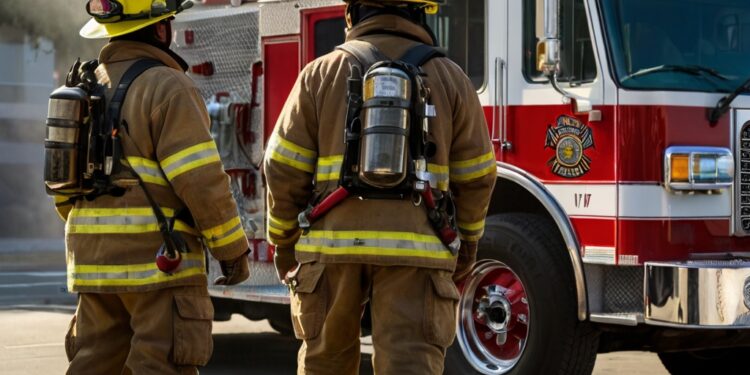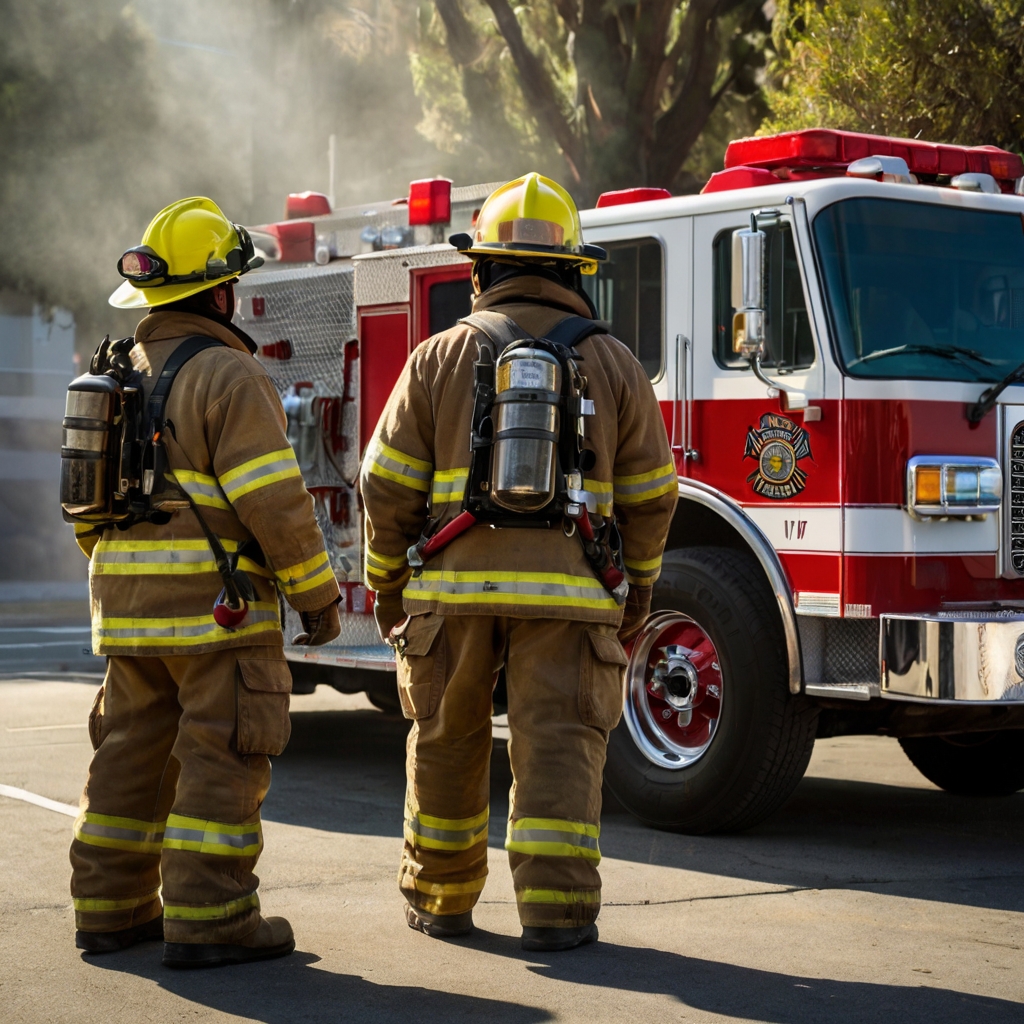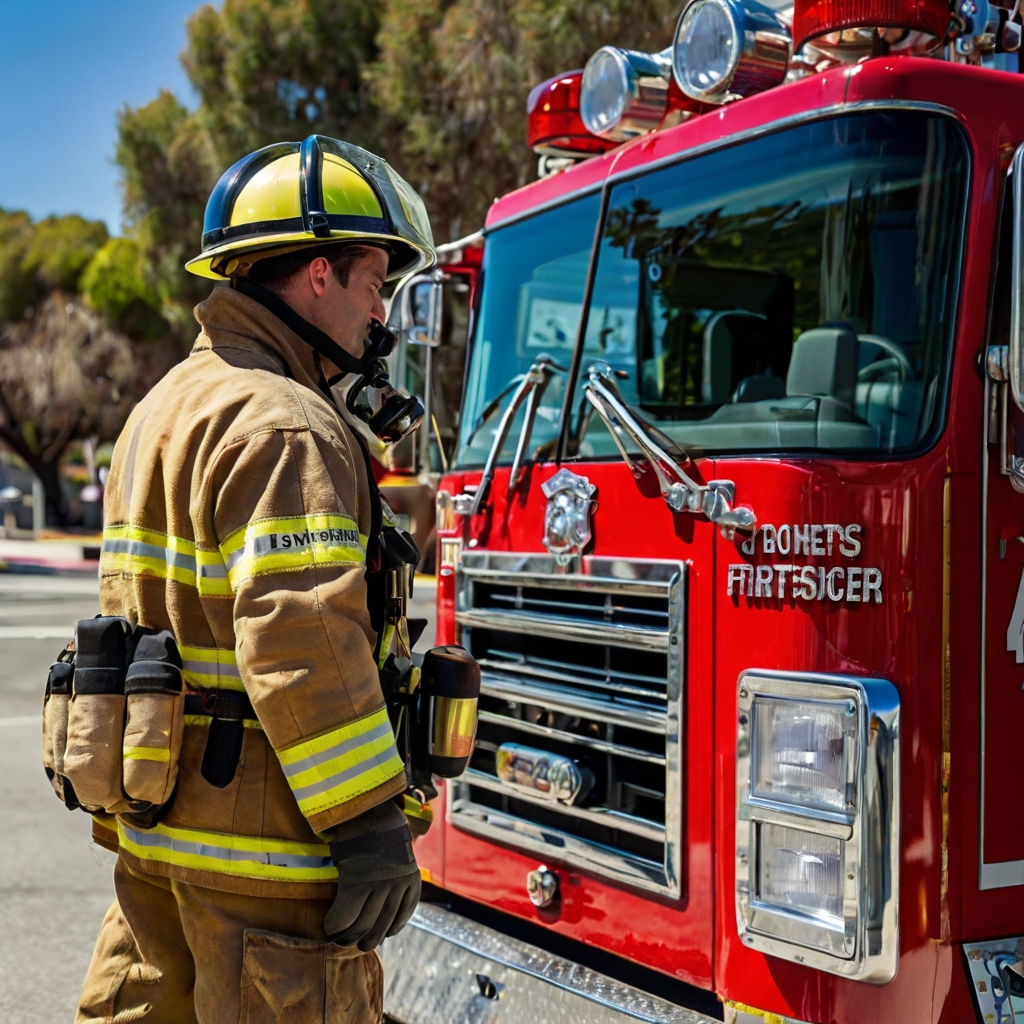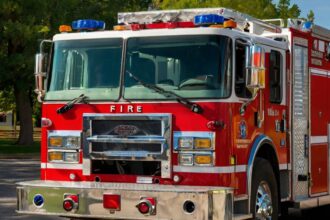Firefighter Endorsement

A firefighter endorsement is a vital qualification that lets operators legally drive fire department vehicles on public roads. States like California have made this endorsement mandatory since January 2011 for anyone who operates firefighting equipment.
The special license qualification demands completion of certified training programs. Drivers must complete at least 14 hours of supervised behind-the-wheel training. They need to pass written exams and meet strict medical and physical fitness standards. This detailed guide gives you the knowledge you need to get and keep a firefighter endorsement, covering everything from simple requirements to application steps and ongoing duties.
Table of Contents
- 1 What is a Firefighter Endorsement?
- 2 Key Requirements for Getting the Endorsement
- 3 Step-by-Step Application Process
- 4 Here are some FAQs about firefighter endorsement:
- 4.1 What is an endorsement in a CA license?
- 4.2 Do you need your EMT to be a firefighter in California?
- 4.3 How long does a California endorsement take?
- 4.4 What is considered an endorsement?
- 4.5 How do I prove residency in California?
- 4.6 How to become a firefighter in CA?
- 4.7 How much do firefighter EMTs make in California?
- 4.8 How much is fire academy in California?
What is a Firefighter Endorsement?
The firefighter endorsement is a special certification added to a driver’s license that lets you operate firefighting equipment and emergency response vehicles. This certification serves as an alternative to getting a Commercial Driver’s License (CDL) and helps fire departments train and qualify their staff more easily.
Basic definition and purpose
A firefighter endorsement shows up as an “F” designation on your driver’s license and shows you have qualifications beyond standard driving privileges. This certification bridges the gap between regular driving licenses and commercial requirements. It’s especially helpful for volunteer fire departments that don’t have many resources. The endorsement lets you operate Class A or Class B vehicles used for emergency response, like fire engines and trucks, without needing a full commercial license.
Who needs this endorsement
Career and volunteer firefighters who operate firefighting equipment need this certification. This also applies to:
- Federal and state agency firefighters
- Municipal fire department personnel
- District fire department members
- Tribal fire department staff
- Volunteer firefighters with official department recognition
Several operational factors determine if you need this endorsement. Career firefighters who want to advance or specialize usually need this certification. On top of that, some jurisdictions require specific endorsements for certain firefighting roles, especially in areas with unique emergency response needs.
There’s one exception for training scenarios. Firefighters don’t need the endorsement when they operate equipment during non-emergency training sessions under direct supervision of properly licensed department personnel. This allows practical training to continue while keeping safety standards high.
This endorsement is important because it solves many practical challenges fire departments face. Instead of requiring extensive CDL training that can drain resources and slow down qualification, this certification gives first responders a faster way to get their vehicle operation training.
Key Requirements for Getting the Endorsement
Getting a firefighter endorsement requires meeting strict requirements in several areas. You’ll need to meet specific prerequisites before starting your certification path.
Age and license prerequisites
You must be at least 18 years old to apply for a firefighter endorsement. A valid, unrestricted driver’s license is essential. Your driving record needs to be clean and you must have legal work status. Any felony convictions or misdemeanors related to moral turpitude will automatically disqualify you.
Medical standards
The National Fire Protection Association (NFPA) sets detailed medical standards for all firefighter endorsement applicants. You’ll need annual medical examinations that assess:
- Cardiovascular health and stress tolerance
- Body composition and physical capabilities
- Vision requirements of 20/30 in both eyes
- Grip strength and muscular endurance
- Lower back and hamstring flexibility
Medical evaluations look for conditions that could affect a firefighter’s ability to perform core functions safely. The Department of Energy’s Designated Physician must certify candidates each year to confirm their medical fitness for duty.
Training certifications needed
The certification process requires specific training programs. You’ll need to complete:
- 16 hours of classroom instruction covering cognitive aspects
- 14 hours of supervised behind-the-wheel driver training
- Fire Apparatus Driver/Operator 1A training or equivalent department instruction
- Training that meets National Fire Protection Association (NFPA) 1002, Chapter 4 standards
The final requirements include submitting an “Original Firefighter Employment and Training Verification” letter on department letterhead. This letter must verify your employment or volunteer status, show proof of completed fire equipment operator training, and include the fire chief’s signature. You’ll also need to pass a written firefighter endorsement test and submit a completed Health Questionnaire form.
Step-by-Step Application Process
Getting a firefighter endorsement takes attention to detail during the application process. You must gather specific documents and follow DMV procedures carefully to succeed.
Gathering required documents
You’ll need several key documents for your application package. We needed an “Original Firefighter Employment and Training Verification” letter on official fire department letterhead. This letter should have:
- Certification of employment or volunteer firefighter registration
- Proof of completed fire equipment operator training
- Fire chief’s signature or authorized designee’s approval
You also need to get a completed Health Questionnaire (DL 546) form. The medical documentation needs renewal every two years and doesn’t require a physician’s signature.
DMV application steps
The Department of Motor Vehicles has a well-laid-out process for endorsement applications. You must visit your local DMV office in person and complete these steps:
- Submit a Driver License Application (DL 44)
- Present proof of identity and California residency
- Pay applicable processing fees
- Complete required written examinations
- Get interim license and endorsement card (DL88)
Common application mistakes to avoid
Knowing what can go wrong helps make your application process smoother. Most people don’t deal very well with answering every question on application forms. Remember to mark “N/A” for non-applicable items instead of leaving them blank.
There’s another reason applications get delayed – unclear copies of required certificates or incomplete address information. Make sure to double-check all your documentation for accuracy.
Many people think the firefighter endorsement test is like regular driver’s license exams. But this specialized test includes elements from Class A and B commercial driver’s tests. Your preparation should focus on commercial driving regulations, especially:
- Air brake systems
- Tank vehicle operations
- Pre-trip inspection procedures
- Commercial vehicle classifications
Being honest throughout the application process is vital. Background checks will show any discrepancies, so it’s better to be transparent about past incidents or violations than try to hide them.
Here are some FAQs about firefighter endorsement:
What is an endorsement in a CA license?
An endorsement on a California driver’s license is an additional certification that permits the holder to operate specific types of vehicles. A firefighter endorsement allows individuals to legally drive firefighting vehicles without needing a commercial driver’s license (CDL). Other endorsements include those for motorcycles, hazardous materials, and passenger transport.
Do you need your EMT to be a firefighter in California?
In most cases, becoming a firefighter in California requires an Emergency Medical Technician (EMT) certification. Many fire departments require candidates to have at least an EMT-Basic certification before applying. Some departments may also prefer or require a paramedic certification for advanced medical response roles.
How long does a California endorsement take?
The time required to obtain a firefighter endorsement in California depends on training completion and DMV processing times. The training itself can take several weeks, depending on department requirements. Once training is completed, the DMV processing time can range from a few days to a few weeks.
What is considered an endorsement?
An endorsement is an additional qualification added to a driver’s license that permits the holder to operate specific vehicles or perform certain tasks. A firefighter endorsement allows individuals to drive fire engines and emergency vehicles. Other examples include endorsements for motorcycles, tankers, and hazardous materials transport.
How do I prove residency in California?
To prove residency in California, you must provide documents such as a utility bill, rental agreement, mortgage statement, or bank statement with your California address. The DMV may also accept official government documents or employment records that show your residency. Firefighters applying for an endorsement may need to provide department-issued paperwork verifying their status.
How to become a firefighter in CA?
Becoming a firefighter in California requires a combination of education, physical fitness, and certifications. Candidates typically complete a fire academy program, obtain EMT certification, and pass written, physical, and background exams. Some departments also require paramedic training, and a firefighter endorsement may be necessary for operating emergency vehicles.
How much do firefighter EMTs make in California?
Firefighter EMT salaries in California vary by location, department, and experience level. On average, firefighter EMTs earn between $50,000 and $80,000 per year. Larger cities and departments may offer higher salaries, and additional certifications, such as paramedic training, can increase earnings.
How much is fire academy in California?
The cost of fire academy training in California depends on the institution and location. Public fire academies typically charge between $1,000 and $5,000 for tuition and materials. Private academies may be more expensive, but financial aid and scholarships may be available for qualifying candidates.



